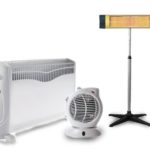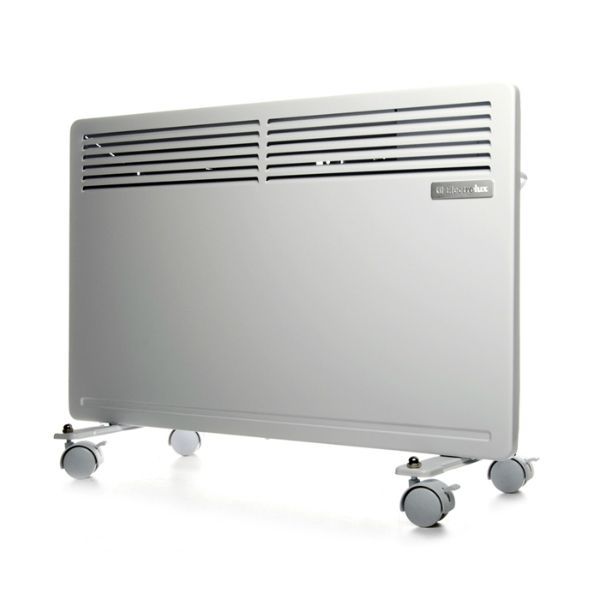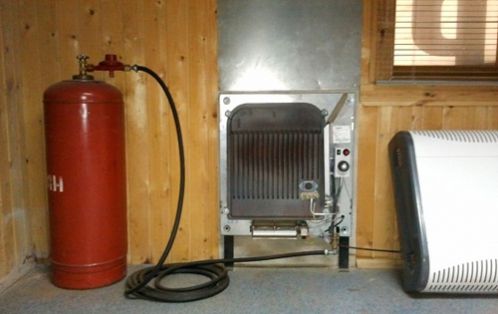What is better: convector or infrared heater
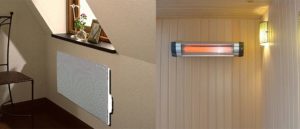 On the market of electrical appliances, there are a huge number of options for equipment designed to solve one or another household issue. In this sense, the family of devices for organizing local heating is no exception. If you need to warm a room in the absence of a centralized heating system, you can turn to the help of a household appliance. But which one should you choose? Currently, infrared heaters and electric convectors are in greatest demand in this class of equipment. Which device is preferable in each specific situation?
On the market of electrical appliances, there are a huge number of options for equipment designed to solve one or another household issue. In this sense, the family of devices for organizing local heating is no exception. If you need to warm a room in the absence of a centralized heating system, you can turn to the help of a household appliance. But which one should you choose? Currently, infrared heaters and electric convectors are in greatest demand in this class of equipment. Which device is preferable in each specific situation?
The content of the article
Operating principle and design of an infrared heater
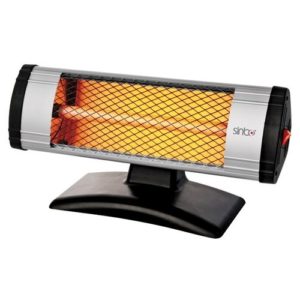 The operating principle of an infrared heater is based on the distribution of thermal energy through radiation. Thanks to this principle, the sun transfers heat across millions of kilometers to the Earth, heating its surface to temperatures sufficient to support life on the planet. In the same way, an infrared heater directs its rays emanating from an internal source onto objects and surfaces, causing them to heat up, while the temperature of the air through which the infrared radiation passes does not change. It rises only directly from objects heated due to radiation.
The operating principle of an infrared heater is based on the distribution of thermal energy through radiation. Thanks to this principle, the sun transfers heat across millions of kilometers to the Earth, heating its surface to temperatures sufficient to support life on the planet. In the same way, an infrared heater directs its rays emanating from an internal source onto objects and surfaces, causing them to heat up, while the temperature of the air through which the infrared radiation passes does not change. It rises only directly from objects heated due to radiation.
The device consists of the following main components:
- emitter, which can be a halogen, quartz or carbon lamp;
- metal reflector or reflector made of steel or aluminum;
- a housing made of heat-resistant material in which a temperature sensor and control device are mounted.
REFERENCE! The emitter lamp heats up under the influence of electric current. In halogen heaters, radiation occurs in both the visible and infrared ranges of the spectrum, while quartz and carbon models operate invisible to the human eye. They are slightly more expensive than halogen ones.
The radiation generated by the lamp and amplified by the reflector is directed to the area requiring heating. The surface and objects on which the rays fall receive the energy of the device, heat up and subsequently release heat to the environment.
Differences between an infrared heater and a convector
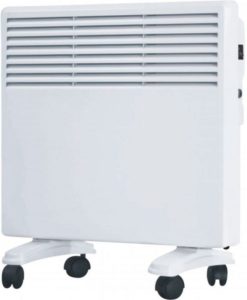 The operating principle of an infrared heater is fundamentally different from a convector. The latter heats not objects, but the air of the room in which it is installed. This occurs due to the free circulation of air - convection generated by an electrical device: cold air, concentrating in the floor area, enters the convector through the slots in the lower part of the body, heats up inside it upon contact with the heating elements and naturally rises to the top, due to its density warm gas is lower than cold gas.
The operating principle of an infrared heater is fundamentally different from a convector. The latter heats not objects, but the air of the room in which it is installed. This occurs due to the free circulation of air - convection generated by an electrical device: cold air, concentrating in the floor area, enters the convector through the slots in the lower part of the body, heats up inside it upon contact with the heating elements and naturally rises to the top, due to its density warm gas is lower than cold gas.
Giving up heat to the surrounding air, the heated flow gradually cools, becomes heavier and lowers, after which it again enters the device.Thus, there is a gradual circulation of air masses and an increase in room temperature. The device transfers heat only to those objects that are in close proximity to its body. The rest of the room is heated more or less evenly.
Which is better, infrared heater or convector?
To determine which of the two types of heaters is better, you need to decide on the comparison criteria. It is proposed to take the following characteristics as criteria:
- speed and quality of heating;

- safety and environmental friendliness of devices;
- efficiency in work.
Speed and quality of heating
An infrared heater is a directional device. If you need to heat a certain zone (to warm yourself), it is enough to direct radiation there (to be in its direction) - the effect will not take long to appear. In this case, the entire room will warm up more slowly and not as evenly as with convection.
A convector, if properly positioned to promote natural air circulation, will heat the entire room faster and more evenly, but it cannot be focused in a certain direction. You can only install it in a zone that requires a rapid increase in temperature.
On the other hand, the microclimate from heating by an infrared unit is not subject to deterioration, since the device has virtually no effect on air humidity, which is so important for human breathing. The convector, although it does not make the air completely dry, nevertheless slightly reduces the humidity.
To summarize, we can say that the emitter works more focally and more carefully in relation to the environment, it is possible to adjust not only the temperature, but also the direction of its propagation, and the convector - in general, heats the room faster, more evenly, but causes some damage to the microclimate in part humidity.
Safety and environmental friendliness
We can confidently say that both types of devices have a high degree of safety. They are protected from internal overheating and tipping over by an emergency shutdown system. However, there are limitations when installing an infrared heater near objects, as well as when a person remains in the radiation path for a long time. This can lead to deterioration in health, the formation of skin burns like sunburn, and even damage to the retina of the eyes. Therefore, the emitters cannot be used for a long time and left unattended.
Thermal convectors are less demanding and safer in this regard. As for environmental friendliness, they are somewhat inferior to infrared competitors, because during the convection process they involve dust particles in circulation, and, as was said, they affect humidity.
ATTENTION! Both types of devices are capable of emitting an unpleasant odor associated with burning dust when it comes into contact with the heating element. For the former, this is due to the operating principle - convection, for the latter - a long stay in the off state and the accumulation of dust in the area of the heating elements.
In terms of noise, there is also no leader here, since the compared devices operate quietly.
Economical
Both heating devices have high energy efficiency compared to other electric heaters. We can say that in a certain sense the emitter is more economical than its “rival”, because it heats up the area to which it is directed faster. If we talk about the need to heat the entire room, then the picture will be the opposite.
When choosing a device, you must first of all be guided by the task at hand. Infrared heaters have no competitors if you need to organize a thermal curtain or spot heating of any area. They are also more effective when used in drafty rooms.
If we are talking about a room in which there are no drafts and you need to maintain a constant temperature for a long time, you can safely opt for a convection device.


